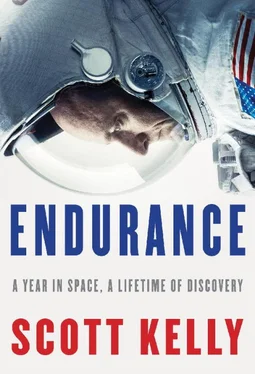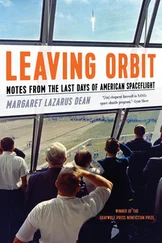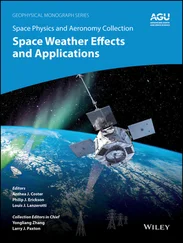“You still want to do it?” George asked me after a few hours of watching nonstop.
“What do you mean?” I asked.
“The shuttle,” George said. “You still want to fly on it?”
“Absolutely,” I said, and I meant it. My determination to fly difficult aircraft had only grown stronger as I had learned more about aviation, and the space shuttle was the most difficult aircraft (and spacecraft) of all. The Challenger disaster had made clear that spaceflight was dangerous, but I already knew that. I felt confident that NASA would find the cause of the explosion, that it would be fixed, and that the space shuttle would be a better vehicle as a result. It sounds strange, but seeing the risk involved only made the prospect of flying in space more appealing.
It wasn’t until years later that I understood that a management failure doomed Challenger as much as the O-ring failure. Engineers working on the solid rocket boosters had raised concerns multiple times about the performance of the O-rings in cold weather. In a teleconference the night before Challenger ’s launch, they had desperately tried to talk NASA managers into delaying the mission until the weather got warmer. Those engineers’ recommendations were not only ignored, they were left out of reports sent to the higher-level managers who made the final decision about whether or not to launch. They knew nothing about the O-ring problems or the engineers’ warnings, and neither did the astronauts who were risking their lives. The presidential commission that investigated the disaster recommended fixes to the solid rocket boosters, but more important, they recommended broad changes to the decision-making process at NASA, recommendations that changed the culture at NASA—at least for a while.
Years later, one of the first briefings I got as a new astronaut was about the Challenger disaster. Hoot Gibson, who was in the same class as three of the Challenger crew, detailed exactly what had gone wrong that January day. He also told us what the crew likely experienced in the last minutes of their lives. He wanted us to understand the risks we would be running if we flew in space. We took his words seriously, but no one dropped out after that briefing.
—
GRADUATING FROM MARITIME, in 1987, made me pause and reflect. My admission had been make-or-break for me. I would never forget that. What I had learned there—in the classroom, on the ship, from my peers, from my mentors—had been life changing. I was a completely different person from the confused kid who had entered through those gates four years earlier. I felt a debt of gratitude to the school for everything it had done for me, and I was nostalgic about leaving a place where I had so many fond memories. Over the years, I’ve tried to stay connected to the school, and in the time since I graduated their prestige has grown—when financial magazines rank colleges whose graduates have the highest salaries, SUNY Maritime is almost always up there with Harvard and MIT, sometimes at the very top.
I earned a high score on the aviation qualification test, and soon after I was assigned to flight school in Pensacola, Florida. I packed all my belongings into my old white BMW and drove south that summer of 1987. Pensacola is on the panhandle, commonly known as the Redneck Riviera, so in a lot of ways it’s more like Alabama than most people’s idea of Florida. It’s a small city, dominated by the naval air station, and tourism is the main industry aside from training Navy fliers. Pensacola is very much a typical military town with trailer parks, pawn shops, and liquor stores, but in this case set against a background of beautiful beaches.
When I reported for my eye exam on the first day of flight school, there were four uniformed officers facing me. I’d expected to find one busy flight surgeon who would make me read a chart and then (I hoped) send me on my way, but the wall of high-ranking officers scrutinized me, stern and unsmiling throughout the exam. Their presence was distracting, and I continually questioned my responses—perhaps this was their intention. I got through the eye exam with a clean bill of ophthalmic health. Years later, I met a Navy flight surgeon who was in that room the day of my eye exam. He admitted that it was an intentional tactic of intimidation.
Naval aviation indoctrination got started with several weeks of tough physical, swim, and survival training. There was a cross-country course we had to navigate in a certain amount of time, an obstacle course with hurdles to jump over, barriers to shimmy under, sand to crawl through, a wall to climb. The film An Officer and a Gentleman gives a pretty accurate representation of what aviation indoctrination training was like, and just as in the film, we student naval aviators had to conquer the Dilbert Dunker a few weeks in. The dunker is designed to simulate the unpleasant experience of a water landing or ditching in an airplane. Dressed in full flight gear and helmet, we were strapped into a mock-up cockpit that was then sent down a steep rail into the deep end of a swimming pool. We were warned that the impact with the water could be hard enough to knock the wind out of us, and that once submerged we’d have only a few seconds to get our bearings before the cockpit turned upside down. I would have to detach the comm wire from my helmet, release myself from the restraints from which I’d be hanging, find my way out of the cockpit, and then dive deeper in order to escape the fuel that might be burning on the ocean surface in a real water landing. A few people who went through this before me couldn’t find their way out and had to be pulled out of the cockpit by rescue divers. This made the risks much more vivid to those of us still standing in line, but when I hit the water I managed to find my way out on the first try.
We also had to go through a similar dunker that simulated a helicopter crash in water. We were strapped into a mock-up helicopter, which was dropped into a pool, flipped over, and sent to the bottom. As with the Dilbert Dunker, I had to be able to get unstrapped and swim to safety. The helo dunker was much harder, though, because several of us, blindfolded, had to get out a single door. People have drowned in the helo dunker, and I heard that some even went into cardiac arrest. We sat strapped in and watched the water slowly climb, grabbing a last breath as it reached our noses. We had to wait to unstrap ourselves until after we were upside down and the motion stopped. I’d try to find a railing or structure on the inside of the cockpit to serve as a reference point to reach for once blindfolded. Once I was upside down, though, everything seemed to move around, and I’d inevitably get kicked in the face by someone flailing for the door, or get kicked in the stomach and have the wind knocked out of me. I’m sure I also kicked the guys behind me. I couldn’t have been happier when I passed the test, though I knew I would have to requalify every four years (NASA has its own water survival training, but it’s much easier). As it happens, I would never need to use any of the emergency training, either the Navy’s or NASA’s.
The swim requirements were even harder. We had to be able to swim a mile and tread water for fifteen minutes, in full flight suit and boots. I got through the mile easily, but I found treading water murderously difficult. Other guys seemed to be naturally buoyant; I seem to have the buoyancy of a brick. I practiced and practiced and was finally able to pass the requirement, though just barely.
I also learned various survival techniques in water, like taking off my pants and making a flotation device out of them by tying the legs closed and filling them with air. I learned drownproofing, a technique for staying alive in water for long periods of time by calmly floating facedown in the water and bringing my mouth slowly up to the surface only when I needed to take a breath. I learned how to disentangle myself from the strings of a parachute collapsed on me in the water. I practiced being rescued from the water by a helicopter, hooking a sling called a horse collar around myself to be hoisted up into the air. The hardest part of this was all the water the helo would kick up into my face, making it feel as though I was drowning.
Читать дальше












